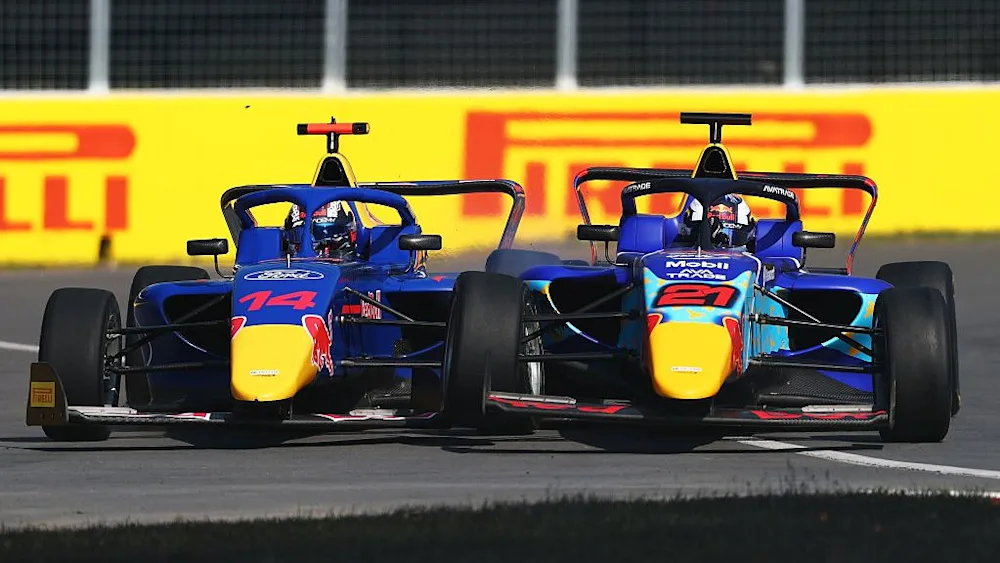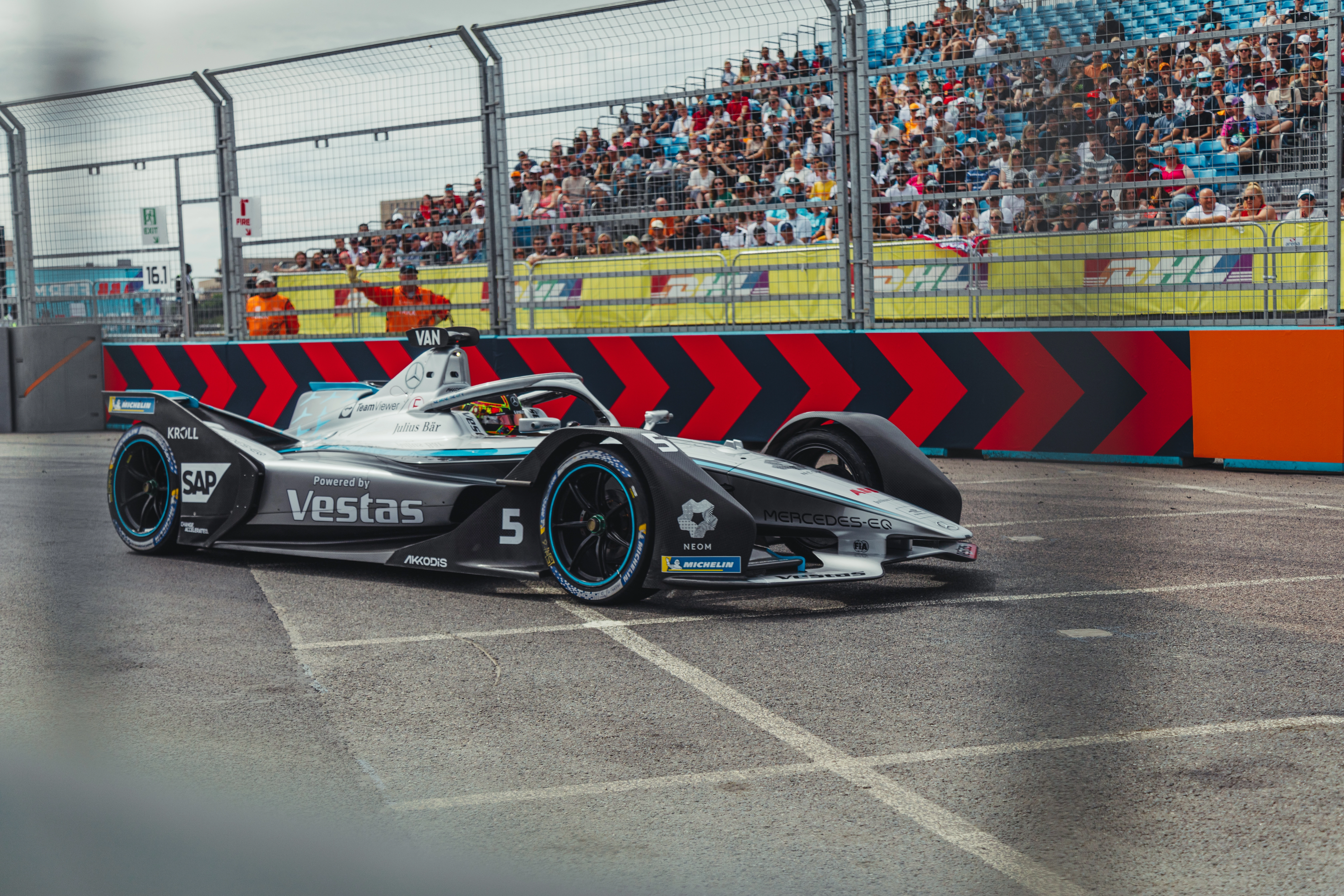The Merging of the Road to Indy and F1 Feeder Ladders
- DIVEBOMB Motorsport
- May 2, 2023
- 5 min read
Written Sean McKean, Edited by Ishani Aziz

When it comes to the junior ladders, IndyCar and Formula 1 have a lot in common: both have a well-defined system for feeding junior drivers into the main series. Graduates of their respective ladders include drivers like Lando Norris, George Russell, Kyle Kirkwood, and Josef Newgarden. However, a recent trend has begun to appear, in which these two feeder ladders have begun to merge.
The Beginnings
Prior to 2019, plenty of drivers have gone from Formula 1 to IndyCar and vice versa, most notably Juan Pablo Montoya. After he had won the F3000 title in Europe, Montoya couldn’t secure a ride in Formula 1, so he made the move to America to race in CART. In his rookie season, Montoya won the title convincingly, as well as adding an Indy 500 victory the following year in 2000.
In 2001, Montoya went back to Europe to race in Formula 1, where he remained until 2006. In his time in F1, he amassed seven wins, a feat that seemed impossible in the era of Schumacher dominance. After leaving F1, he went back to America to race in NASCAR and - more famously - IndyCar. Montoya would add another Indy 500 win in 2015, as well as making a charge for the title that same year, only losing out to Scott Dixon due to the double-points finale.

Montoya was far from the only Formula 1 driver to dabble in races across the pond though. Another notable example of this was Rubens Barrichello in 2012. After retiring from F1, the Brazilian driver went for a full season of IndyCar. Though he didn’t see much success, finishing P12 in the standings with a best finish of P4 at Sonoma, he managed to win the Rookie of the Indy 500 award, in which he finished P11.
Takuma Sato is one who’s seen success after moving to the states too. After being forced out of Formula 1 due to Super Aguri shutting down in 2008, he made the move to the States in 2010. Since this move, Sato has seen great success. He has won the Indy 500 twice (2017, 2020), an incredibly difficult feat, and won six races total since 2013. Having a best finish of P7 in the points, it is undeniable that his move to American single-seaters has been a success.
“Patient Zero”
Though drivers have been circling in and out of F1 and IndyCar, the possibilities became evident to everyone in the Formula 1 paddock in 2018. After a relatively mediocre season, Marcus Ericsson was dropped by Alfa Romeo Sauber, leaving him without a ride for 2019. Being beaten by his rookie teammate Charles Leclerc convincingly, it became clear very few teams wanted his duties. As a result, he sought refuge in IndyCar, signing for Arrow Schmidt Peterson Motorsports to drive their #7 car.
To say his start in IndyCar was slow would be an understatement, as he finished P17 in the final standings with only one podium to his name at Belle Isle. Ericsson then vacated to the #8 Chip Ganassi Racing car for the 2020 season, and - as they say - the rest is history. Since joining Ganassi, the Swede has won four races, one of which was the 2022 Indy 500. These aren’t just some fluke wins either, as he currently sits P1 in the 2023 standings.

Following in the Footsteps
When Ericsson made the move to IndyCar in 2019, it came off of a rather unspectacular Formula 1 career. Scoring 18 points in his five seasons, it was a definite surprise to see how well he performed overseas. Given how well he performed, it was only a matter of time before other drivers followed suit, under the assumption they’d be tasting as much champagne.
Enter: Romain Grosjean. After missing the last two races of the 2020 season from burns sustained in a crash at Bahrain, Grosjean did not appear to be returning to Formula 1. Over the off-season, he announced that he would be driving for Dale Coyne Racing’s #51 car for select races. This would be a more successful rookie season than Marcus Ericsson, as he would finish P15 in the standings (despite not participating in three races) and take three podiums, two from the Indianapolis road course races and one from Laguna Seca.

For the following 2022 and 2023 seasons, Grosjean would sign for Andretti Autosport, taking the place of Ryan Hunter-Reay in the #28 DHL machine, for the full season. His first season in 2022 wasn’t very successful, only taking one podium in the Grand Prix of Alabama at Barber.
But for 2023, it has been much improved. Even though the results don’t show it, Grosjean has been a contender for the win in all three races so far this season. At St. Petersburg, he got into a collision while battling for the lead late in the race with Scott McLaughlin. At Texas, he was battling for the lead with four laps remaining until a crash in turn two put him out of the running. At Long Beach, he kept the car clean to just miss out on the victory, finishing P2. If Grosjean keeps this pace up, he could be a genuine title threat for the 2023 IndyCar season.
A Backup Plan
Though we have gone over plenty of examples of those who went from F1 to IndyCar, how about the ones who didn’t even make it to F1? One such example is Dane Christian Lundgaard. After a decent rookie year in Formula 2 in 2020 where he finished seventh in the standings, he wasn’t having the same fortune in 2021. Over the summer break, Christian took a shot at IndyCar, signing with Rahal Letterman Lanigan to drive the #45 at the Indianapolis road course. Lundgaard shattered all doubt that may have surrounded him, as he would qualify P4 on debut enroute to a P12 finish.

Coming off of a fantastic one-off in 2021, Lundgaard announced he would be signing for the team full-time in 2022. For that season, he performed great given his machinery. Though the results on paper don’t show his performance, he finished P14 in the standings with a podium at Indianapolis road course, as well as some great runs at Laguna Seca and Nashville.
As Lundgaard continues with Rahal in 2023, his season appears to be similar to last time. He currently sits P14 in the standings with a best finish of P9 at St. Petersburg; however, this overshadows great runs he had at both Texas and Long Beach.
More examples continue to show up as well, namely Callum Ilott and Marcus Armstrong, and these two have performed pretty well. Ilott has been a top five driver in every race this season, having a best finish of P5 at St. Petersburg. Though Armstrong isn’t doing the full schedule, he’s had some great runs so far, primarily his P8 finish at Long Beach.

Other Way Around
Though we’ve gone over plenty of examples of F1 drivers moving to IndyCar, how about the other way around? The names referenced in this instance for modern-day would be Spaniard Alex Palou, Mexican Patricio O’Ward, and American Colton Herta. Even if they haven’t gotten a seat, it may be only a matter of time for one of these three.
Palou, 2021 IndyCar champion, has joined the McLaren F1 development programme after a rather complicated contract dispute between Arrow McLaren and Ganassi. O’Ward has done the same, though, with far less contract conflict. Herta is a different story though, as Andretti Autosport are sizing up an entry into Formula 1 with Cadillac in 2024. Given Herta is their current superstar, it wouldn’t be shocking to see him in a Formula 1 car come 2024. It’s likely that the paths between IndyCar and Formula 1 will only continue to intertwine in the near future, given the examples we’ve seen so far.









Comments